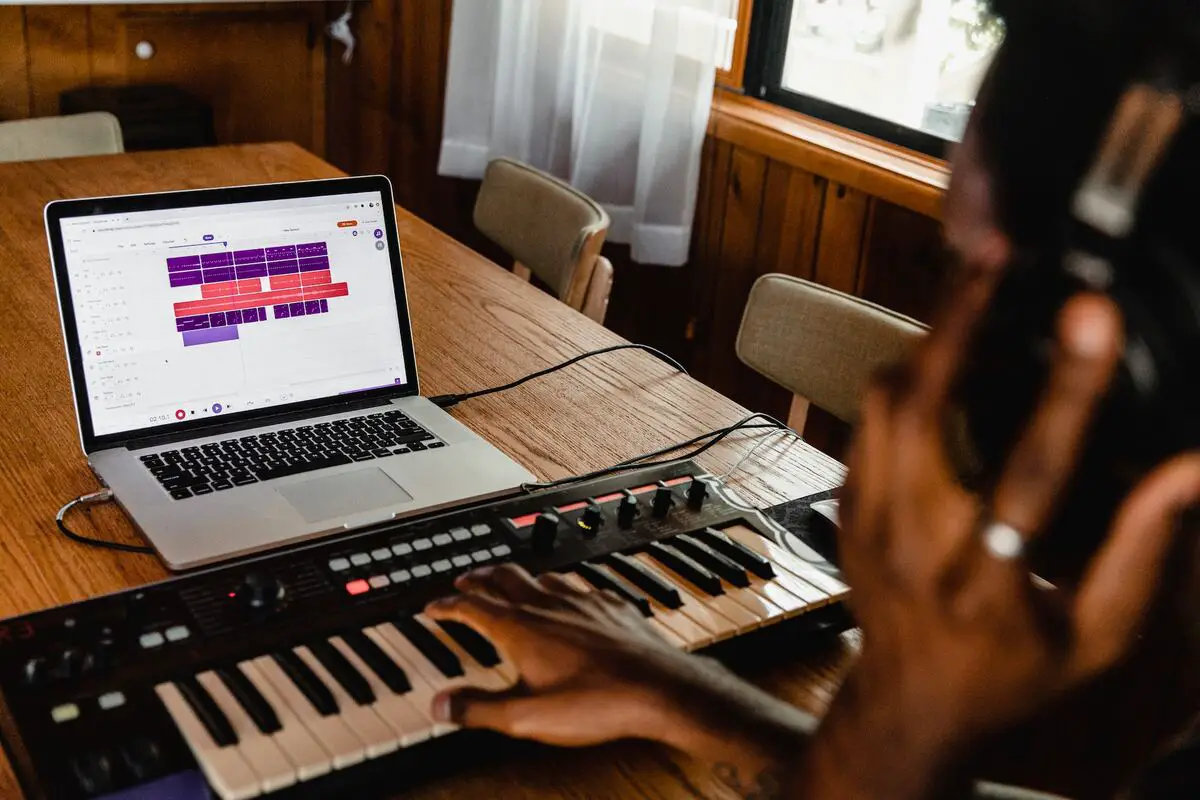If you’re a beginner in music production, you might be wondering what an arrangement is and how it can help you create more compelling music. Fear not, my friend, for today, I’m going to show you the ropes and give you a crash course on what arrangement in music is all about. In this post, we’ll cover everything you need to know about arrangement in music. From the basics of what it is and why it’s important, to the elements and techniques used in creating arrangements, I’ll have you covered.
What is arrangement in music? Arrangement in music refers to the process of taking a piece of music and altering or adapting it to create a new version with different instrumentation, harmonies, and overall structure. It involves the manipulation of the different elements of music to create a unique and compelling sound.
What is arrangement, and why is it important in music?
Arrangement in music is done by adapting a composition to suit a different medium or instrumentation while retaining the essential character of the original piece. It involves making creative decisions regarding the structure, instrumentation, harmony, rhythm, and overall presentation of a musical work.

Arrangements can vary widely, allowing musicians the freedom to interpret and perform a piece according to their artistic vision and the capabilities of their chosen instruments. It allows for the creation of a unique sound with the manipulation of the different elements of music to create a new version of a song that can showcase the artist’s individual style and creativity.
With the right arrangement, musicians can take an existing song and make it their own, creating a signature sound that can help them stand out in the competitive music industry.
AKAI Professional MPK Mini MK3

AKAI Professional MPK Mini MK3
What’s the difference between an arrangement and a cover?
Arrangement and cover are related terms in music, but they have different meanings. Arrangement refers to the process of taking an existing piece of music and altering it to create a new version with different instrumentation, harmonies, and overall structure.
On the other hand, a cover refers to a performance or recording of a previously recorded or published song or piece of music. A cover may include a new arrangement of the original song, but it typically involves recreating the original version as closely as possible with minor variations.
What’s the difference between arrangement and competition?
In the realm of composition, fidelity to the written piece is paramount, as you’ll likely aim to replicate the music as precisely as it’s scripted. However, arranging music opens up a different artistic lane entirely.
Music arrangement is akin to having a creative playground where there are no boundaries. You’re at liberty to interpret and render the piece according to your preference. You could opt to streamline the piece, or, conversely, layer it with complexity. In essence, music arrangement is the art of personalizing an original composition, of truly making it your own unique rendition.
Is it illegal to arrange another artist’s music?
Arranging another artist’s music without proper permission or licensing from the copyright owner is illegal. In order to arrange someone else’s music, you should either obtain permission from the copyright owner directly or from a print representative.
There have been cases where musical artists have faced lawsuits for musical connections that are similar to those of other artists…
It is also important to note that musicians should be aware of copyright laws and updates that may affect their work. There have been cases where musical artists have faced lawsuits for musical connections that are similar to those of other artists, highlighting the importance of obtaining proper permission and licensing.
The extent to which borrowing from other artists is acceptable has been debated among musicians. While some musicians may view it as a form of inspiration or influence, others may view it as theft or ripping off another’s style. However, regardless of personal opinions on the matter, it is important to obtain permission to avoid any potential legal issues.
What are the types of arrangement in music production?
There are several types of arrangement in music production. One way to categorize them is based on their focus:
1. Structural arrangement
This type of arrangement deals with the overall structure of the song, such as the placement of verses, choruses, and bridges. It is important to have a cohesive structure that keeps the listener engaged throughout the song.
2. Instrumental arrangement
This type of arrangement focuses on the individual instruments and their roles in the song. The arrangement must ensure that each instrument has its moment to shine while also ensuring that the overall sound is balanced and cohesive.
3. Spatial arrangement
This type of arrangement is done by placing instruments and sounds in the stereo field. This includes panning, EQ, and reverb and can create a sense of depth and space in the song.
Additionally, the technique of layering is a way to create effective song arrangements. Layering involves using multiple audio tracks that are playing the same part to reinforce the few elements that are already present in the song.

How is composition different from arrangement?
Composition involves creating original musical material, while arrangement involves preparing music for performance by altering the structure and tone of the music to suit a particular occasion. Composition involves imparting the nuance of expression into the framework of the piece, including notes, rhythm, and all other aspects as the composer intended.
In composition, the resulting piece of music is original and unique to the composer. On the other hand, arrangement involves taking an existing piece of music and altering it to fit a specific performance or occasion. This may involve adding or removing parts, changing the instrumentation, or adjusting the overall structure of the piece.
What are the elements and techniques used in creating arrangements?
In terms of musical arrangements, there are several key elements that can be used. These elements include:
1. Rhythm
Rhythm is used to add motion and excitement to the track.
2. Lead
It is typically a vocal, instrument, or solo that serves as the primary focus of the arrangement.
3. Fills
These are short musical lines or phrases that occur between lead lines, providing an answer to the lead.
4. Harmony
This is the combination of different notes or chords that create a fuller sound.
5. Dynamics
This refers to the range of volume in a musical piece that can create interest and variation.
6. Texture
This is the overall sound and combination of different instruments and sounds that contribute to the arrangement.
In addition to these elements, there are also different techniques that can be applied in creating musical arrangements. For example, one technique is to use the first 16, 32, or 64 bars of a timeline as a ‘sketchpad’ to try out ideas for potential drops, switches, breakdowns, and build-ups. Another technique could involve exploring melodic shapes and intervallic leaps.
If you want even more tips and insights, watch this video called “How to Arrange Any Song“ from the Alice Yalcin Efe – Mercurial Tones Academy YouTube channel.
Conclusion
And there you have it, folks! We’ve covered everything you need to know about arrangement in music. From the basics of what it is and why it’s important, to the techniques and tips used to create compelling arrangements, you should now have a solid understanding of the topic.
Did I cover everything you wanted to know? Let me know in the comments section below (I read and reply to every comment). And don’t forget, if you found this article helpful, share it with a friend, and check out my full blog for more tips and tricks on music production. Thanks for reading!
Key takeaways
This article covered arrangement in music. Here are some key takeaways:
- Arrangement in music involves altering an existing piece of music to create a new version with different instrumentation, harmonies, and overall structure.
- Understanding arrangement is crucial for any musician looking to create their music and stand out in the crowded music industry.
- Elements of arrangement in music include melody, harmony, rhythm, dynamics, and texture.
- Techniques used in creating arrangements include transposition, orchestration, chord progressions, counterpoint, and instrumentation.
- Tips for creating arrangements include listening to different types of music, studying arrangements of popular songs, experimenting with different techniques, collaborating with other musicians, and practicing regularly.
- Composition is different from arrangement as composition refers to the creation of an original piece of music from scratch.















